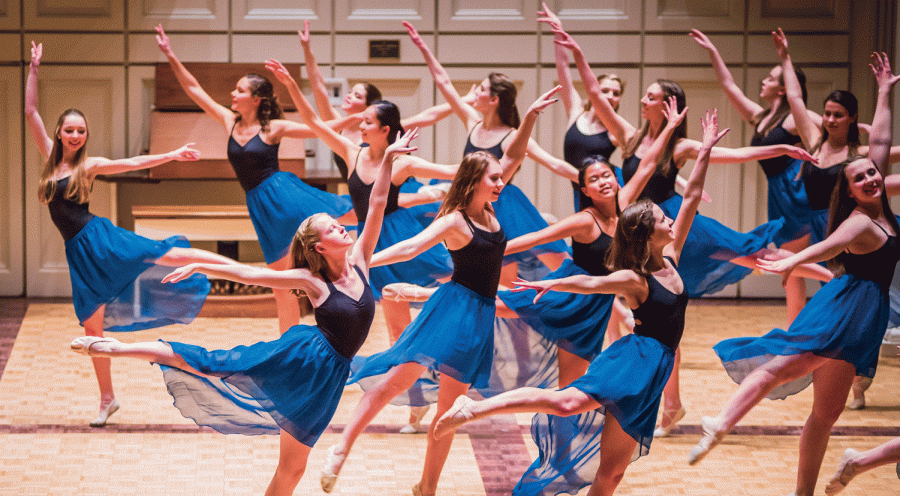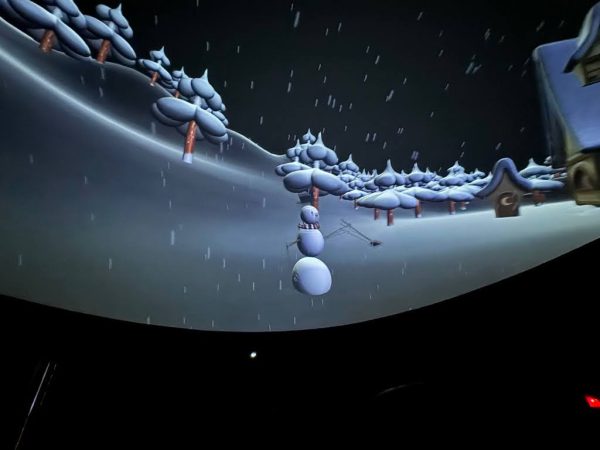Expanding the Academic Arts at Colgate
Both students and faculty are working on the arts in terms of its place in the realm of academics. Between revamps to the Theater program, work on a dance minor, progress towards a Film & Media Studies major and efforts to bring in more students to the Picker Art Gallery, the arts have a bright future at Colgate.
The theater program has recently undergone changes, both altering the major requirements and adding new classes. New requirements
include classes such as Basic Directing.
“The new major requirements are designed to ensure the breadth of the Colgate theater major and to address some structural issues with prerequisites under the old requirements,” Assistant Professor of English in the University Theater Christian DuComb said.
The Theater department also incorporates student productions into its academic program.
“University Theater productions like Seeing the Beast, which runs from November 12-16, are one of the most important components of the theater program,” DuComb said. “We mount a production every semester directed either by a member of our faculty or guest artist, and we need bigger audiences to help our students learn and grow.”
One of the challenges that the theater department faces is the absence of rehearsal and performance spaces. However, President Jeffrey Herbst has created a task force for these facilities.
“There is a lot of student interest in theater at Colgate, but we lack adequate facilities to support both a robust academic program in theater and the myriad student performance groups on campus,” DuComb said. “I hope that some of the task force’s ideas will come to fruition within the next few years. Additional rehearsal, performance and teaching space will make for more and better theater at Colgate.
One of the most significant changes to the Theater program was the addition of dance classes this fall, partially due to the work done by the Colgate Dance Initiative (CDI). Founded by senior Danielle Iwata, the group is working towards changes to dance at Colgate, particularly getting the art to be recognized as an academic subject.
“Our mission is to integrate dance into the academic curriculum,” Iwata said. “All of the other artistic mediums-photography, music, theater, visual arts-are represented on the academic side. We want dance to be able to take its place among the arts.”
One key change this year has been the addition of these dance classes, offered through the English department. Members of the CDI worked to show professors that there is demand for these classes, and for the first time, Colgate has a full-time faculty member, Visiting Assistant Professor of English Tanya Calamoneri, teaching three dance classes.
“I think one of the initial obstacles was convincing others that dance has tremendous academic potential,” Iwata said. “But why should dance’s academic side be any less than the visual arts, music or theater? All of these art forms have theories underlying them, as well as political structures that give rise to new forms or styles.”
Another challenge is finding the money to pay potential faculty. Dance is considered a Theater course, which is part of the English department, and the English department can only spend so much. Still, those who have taken the dance class find it beneficial.
“Students who have little or no training are able to experience dance in a new way,” Iwata said. “Not only has Professor Calamoneri been a fantastic teacher, but she’s also been incredibly involved and exposed us to new types of dance. These classes give an opportunity for everyone to explore the way dance is important to our own culture, as well as our own bodies.”
Although there are many steps to achieve a Dance minor, the CDI hopes to initially institute a full-time dance professor, instead of Calamoneri’s current one-year position. By looking at other college’s dance programs, the CDI is gathering information about what a Colgate program could look like.
“At Colgate, students do have the ability to create their own major, so my hope is that someone in the next few years will be able to take the techinique classes and combine that with a mixture of history, sociology, music and biology courses to create a Dance minor,” Iwata said. “We envision this as being a very interdisciplinary program that draws from existing classes.”
Another change in academics is the possibility of a Film & Media Studies major. Although currently offered as a minor, Assistant Professor of Film & Media Studies and Women’s Studies Mary Simonson is looking at ways to expand the program. According to Simonson, student demand for a major is strong.
Sophomore Chelsea Mohr, who is planning on minoring in Film & Media Studies, feels the need for a major.
“I feel like the Film and Media department is probably the closest thing we have to communications, which is an important field and is a major offered by most schools, so the fact that we have the faculty here to teach Film & Media Studies but don’t offer the major doesn’t make a lot of sense,” Mohr said.
According to Simonson, one of the obstacles is getting the right amount of faculty to teach enough classes to create the major. Currently, the classes are part of University Studies, which means that most are taught by professors in other departments. However, the department has hired their first professor, Assistant Professor of Film and Media Studies Aniruddha Maitra.
Besides Maitra, other professors have been hired that supplement the department. For example, the Art and Art History department have recently hired professors specializing in filmmaking and digital photography. In designing the major, Simonson is working to include these other departments.
“We want to make sure we have a major that will endure,” Simonson said. “We see media shift and develop, and we want our major to reflect that and prepare students to go into all different occupations of media.
Although the major program is being worked on, it will definitely be interdisciplinary and potentially include classes from Anthropology, Art and Art History, Writing and Rhetoric, Italian and German departments.
There is no clear time table as to when this could happen, but there are current efforts to expand the program. For example, the Student Film Society hosts 35mm screenings. The Film & Media Studies department has also been collaborating with the Colgate Entertainment Group.
Another initiative of Film & Media Studies is the Flaherty Film Seminar. Based in New York City, the non-profit brings over 100 filmmakers and scholars to Colgate for a weeklong visit.
A new collaboration brings in a non-U.S., non-Western European perspective to Colgate during the year. After a screening in New York open to parents and alums, the filmmaker, who this year was Sergei Loznitsa, visits campus. Loznitsa had meals with students, visited multiple courses and held conversations with faculty.
Other developments in the arts include the work being done to the Picker Art Gallery. Junior Rebecca Leonard is working to increase attendance, especially before the gallery moves downtown.
“I’ve mostly been reaching out to specific small communities who we think would be interested in visiting the gallery as a group, like individual classes or seminars,” Leonard said. “I’ve also been working on advertising strategies and looking for ways to make the building itself more approachable, since Dana [Arts Center] isn’t exactly a welcoming structure.”
By doing this, Leonard hopes that students become better acquainted with the gallery, and eventually visit it on their own.
“When the new branch opens downtown, it’ll be harder to get to, so it’s important for students to realize now what a great resource the Picker Art Gallery and our other campus museums are so they continue visiting them,” Leonard said. “It is essential that students don’t become out of touch with this part of Colgate after the art has moved downtown.
One thing Leonard hopes will draw students in is the quality of art that Colgate is able to display.
“The art shown at the gallery is really amazing and is by extremely talented and well-known artists who were and are highly influential in the world of art, and you don’t have to pay anything or drive hundreds of miles to see it,” Leonard said.
“We are really lucky to have been loaned the two collections we have right now, Diane Arbus and Richard Serra, so students should take advantage of the opportunity to see their work right on campus.”






